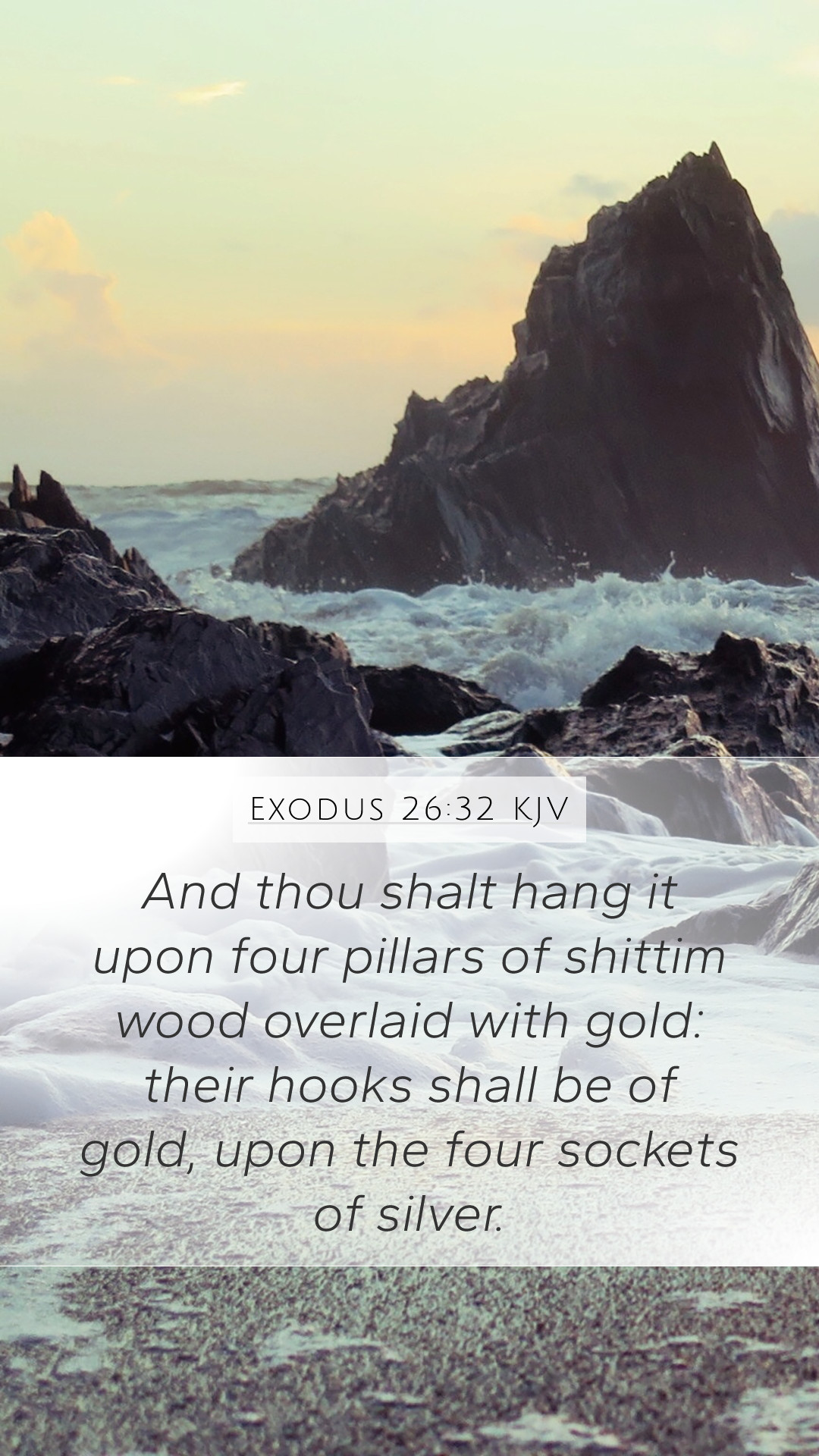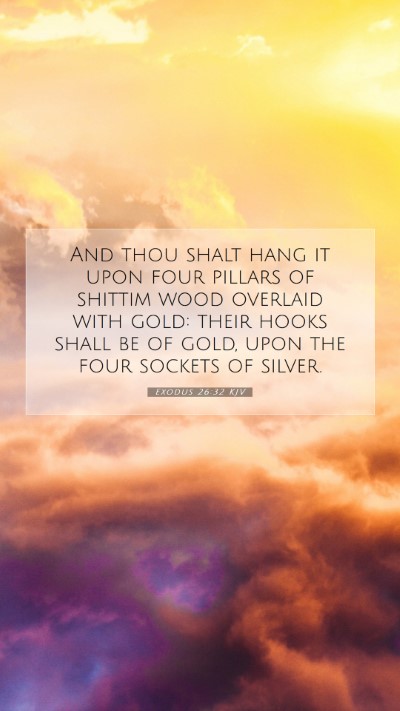Bible Verse Commentary on Exodus 26:32
Verse: Exodus 26:32 - "And thou shalt hang it upon four pillars of shittim wood, overlaid with gold: their hooks shall be of gold, upon the four sockets of silver."
Understanding Exodus 26:32
Exodus 26:32 describes the intricate details of the Tabernacle's construction, emphasizing the importance of materials and design in ancient Israelite worship. The verse focuses on the hanging of a curtain, which serves to separate the sanctuary from the Holy of Holies, the inner sanctum where the presence of God dwelled. This detail is not merely architectural; it carries significant spiritual and theological implications.
Insights from Public Domain Commentaries
Matthew Henry's Commentary
Matthew Henry notes that the four pillars symbolize stability and strength, standing firm in the service of God. The use of shittim wood, a durable and valuable material, represents the humanity of Christ, while the gold overlay signifies His divine nature. The hanging of the veil upon these pillars alludes to the separation between God and humanity, illustrating the necessary sanctity required to approach the Divine.
Albert Barnes’ Commentary
Albert Barnes emphasizes the significance of the sockets of silver upon which the pillars rest. Silver, often associated with redemption in Scripture, points to the price of atonement. The imagery of the pillars and the curtain they support conveys the profound reality of a mediator required to bridge the gap between God and man, prefiguring Christ’s sacrificial role.
Adam Clarke’s Commentary
Adam Clarke highlights the practical aspects of this verse, noting the craftsmanship required in the assembly of the Tabernacle. He elaborates on the symbolic meaning held within the materials: shittim wood signifies durability through trials, while gold represents divine holiness. Together, they illustrate the character of God, demanding respect and reverence.
Theological Significance
The construction of the Tabernacle, as detailed in Exodus, serves as an illustration of God's desire to dwell among His people while simultaneously maintaining His holiness. The curtain not only delineates sacred space but also points toward the coming of Christ, the ultimate High Priest who would fulfill the need for mediation and reconciliation.
Biblical Exegesis and Application
Understanding Scripture, particularly passages like Exodus 26:32, is essential for anyone engaging in Bible study groups or online Bible study. Through this verse, we see how intricate design reflects the nature of God. The significance of materials, positions, and purposes within the Tabernacle provides in-depth insights into God’s plan and how we can apply these principles to our lives today.
Cross References
- Hebrews 9:3-4: Discusses the structure of the Tabernacle, highlighting the furnishings and their meanings.
- Exodus 26:1: Details the materials and construction of the curtains, enhancing our understanding of their significance.
- Matthew 27:51: Indicates the tearing of the veil at Christ’s death, symbolizing direct access to God.
Conclusion
The analysis of Exodus 26:32 reveals much about the nature of God and His intention to dwell among His people. Through biblical exegesis, we can appreciate the layered meanings behind the construction details of the Tabernacle, offering a rich field for Bible verse interpretations and understanding. This passage becomes a beacon for Bible study insights, encouraging deeper exploration of themes such as redemption, access to God, and the sacredness of worship.


